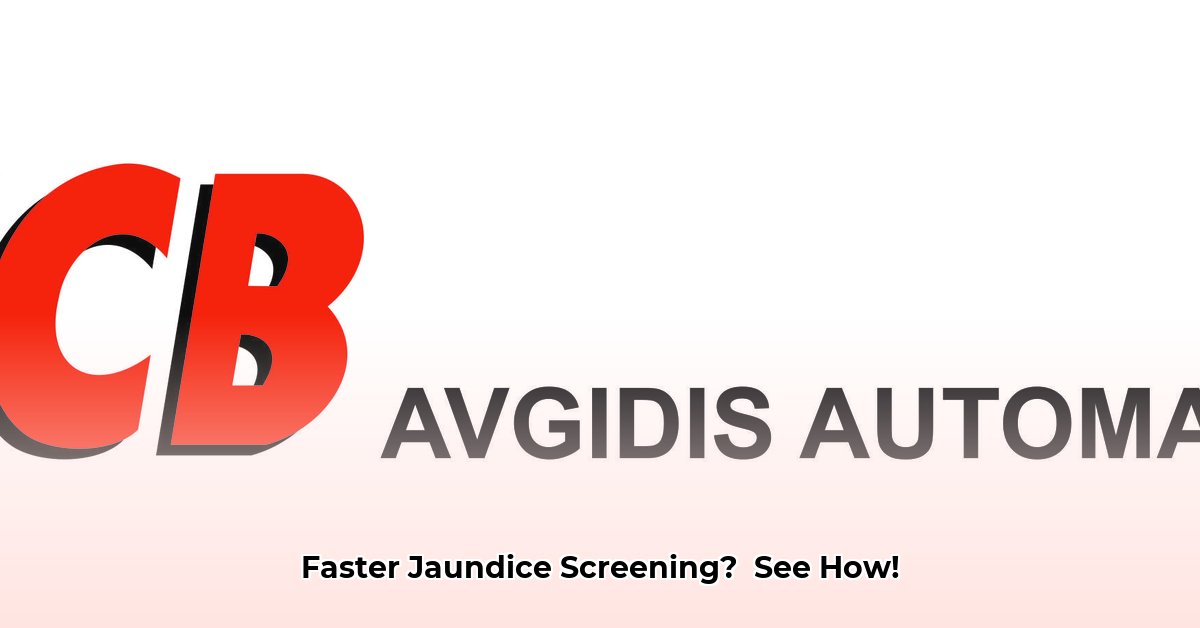Worried about quickly and reliably checking newborns for jaundice? This guide explains how transcutaneous bilirubin (TCB) scanners are changing how we detect jaundice in babies. We’ll show you why these scanners are beneficial, how they work, and perspectives from medical professionals. You’ll also learn tips for efficient and safe jaundice screening, enabling you to make informed decisions for optimal infant care. For more information on TCB technology, see this helpful resource.
How Transcutaneous Bilirubinometers Enhance Neonatal Screening
TCB scanners, or transcutaneous bilirubinometers, are revolutionizing newborn jaundice screening. These devices offer a quick and non-invasive method to measure bilirubin levels, reducing the need for frequent and painful blood draws. This technology eases discomfort for newborns and their parents, while simultaneously streamlining the diagnostic process for medical professionals. This improvement greatly contributes to early jaundice detection, which is crucial for preventing complications in newborns.
Understanding How TCB Scanners Function
TCB scanners use light to measure bilirubin levels through a newborn’s skin. This method is non-invasive, eliminating the need for needles. The results are available almost instantaneously, offering medical staff the data needed to make timely decisions. Early detection of jaundice is vital in preventing potentially serious health issues.
Comparative Analysis of TCB Scanner Brands
Several reputable companies manufacture TCB scanners, each offering different features. Selecting the right scanner depends on a healthcare facility’s needs and financial considerations. Key differences to consider include data transfer capabilities, probe types, and regulatory approvals:
| Feature | Dräger JM-105 | Delta Medical MBJ20 | BiliCare |
|---|---|---|---|
| Measurement Method | Transcutaneous Bilirubin (TcB) | Transcutaneous Bilirubin (TcB) | Transcutaneous Bilirubin (TcB) |
| Probe Type | Reusable | Disposable | Disposable tips |
| Data Transfer | Integrated data management system, wired & wireless | Stores up to 20 Readings | HL7 compatible, USB connectivity |
| FDA/Regulatory Approval | Approved in the USA | Approved in the USA | Approval Status Varies by Region |
| Portability | Highly Portable | Highly Portable | Portable |
| Additional Features | Integrated flagging feature, barcode scanner | Self-calibration with external unit | Displays results in tables and graphs |
The Dräger JM-105 utilizes a reusable probe designed to be cost-effective and easy to clean. The Delta Medical MBJ20 includes disposable probes to minimize the risk of contamination. BiliCare offers measurement via the outer ear, reducing the risk of infection. Choosing between models often depends on a facility’s infection control protocols, budget, and preferences.
Limitations of TcB Scanners
While TCB scanners have many benefits, it’s important to understand they aren’t always perfectly accurate. Factors such as skin tone and environmental lighting can influence readings. More long-term studies are ongoing to fully determine their reliability and consistency.
Benefits of TcB Scanners
Hospitals, doctors, and parents alike benefit from TCB scanners. Hospitals can improve workflows, doctors gain a faster screening method, and parents benefit from the knowledge their child is receiving quality care. The reduced stress for newborns and their families also contributes to the overall healthcare experience
Future Trends in TCB Technology
The future of TCB scanners is promising, with ongoing research focused on improving diagnostic accuracy and integrating seamlessly with hospital information systems. Some experts are exploring using these devices to make more data-driven clinical decisions. Future iterations may feature improved accuracy and expanded capabilities to screen for additional conditions.
Personalized Approach to Scanner Selection
Choosing the appropriate TCB scanner depends on a healthcare facility’s specific needs. Factors to consider include costs, ease of use, existing system integration, and overall reliability. Conducting trials and seeking feedback from medical staff will help determine the best solution for your facility. A detailed comparison of TCB scanners will provide a solid foundation for researching the best fit for your health care system.
How to Compare Neonatal Jaundice Transcutaneous Bilirubinometer Accuracy and Cost-Effectiveness
Key Takeaways:
- TcB offers a faster, less invasive, and potentially more cost-effective method than traditional blood tests for detecting and monitoring neonatal jaundice.
- Accuracy of TcB can vary depending on the device, the infant’s skin condition, gestational age, and the presence of phototherapy.
- Cost-effectiveness depends on device investment, required training, and the reduction of blood tests and prevention of complications.
Understanding Transcutaneous Bilirubinometry (TcB)
TcB uses a handheld device for measuring bilirubin levels through the skin, avoiding painful heel pricks. This noninvasive approach is appreciated by both infants and healthcare providers.
Comparing TcB Accuracy
Accuracy is crucial for accurate bilirubin level measurements. Several components influence the overall accuracy:
- Device Technology: Different TcB devices utilize different technologies that all impact accuracy and precision.
- Skin Pigmentation: Darker skin tones affect readings and require device adjustments and alternative methods.
- Prematurity: Preterm infants often have thinner skin, affecting TcB readings.
- Phototherapy: Phototherapy treatments can interfere with TcB readings.
Ways to compare: Analyze studies validating accuracy across different populations, including gestational ages, skin tones, and phototherapy. Understanding this data will create a stronger correlation between TcB readings and traditional blood tests.
Assessing Cost-Effectiveness
The cost of a TcB device requires analysis of the following:
- Initial Device Cost: Price and accessories.
- Training & Maintenance Costs: Consider staff training.
- Reduced Blood Draws: Fewer blood draws translate to lower costs in labor and supplies.
- Long-Term Benefits: Early detection can prevent long-term complications like kernicterus.
Determine cost-effectiveness studies by using a comprehensive approach, factoring in all costs, including potential avoidance of medical interventions.
Choosing the Right TcB Device
The process of selecting a device needs a clear methodology. The methodology should include:
- Define Needs: Consider infant volume, type of infant, and resources
- Gather Data: Collect specifications.
- Analyze Accuracy Studies: Prioritize with larger sample sizes.
- Evaluate Cost-Effectiveness: Compare total costs.
- Consider Regulatory Compliance: Verify standards are met.
| Feature | Device A | Device B | Device C |
|---|---|---|---|
| Accuracy (%) | 95 | 92 | 90 |
| Initial Cost ($) | 5000 | 7000 | 3000 |
| Maintenance Cost | $100/month | $150/month | $50/month |
| Ease of Use | Excellent | Good | Fair |
No one-size-fits-all solution exists. The best device depends on several factors.
TCB Scanner Implementation in Low-Resource Settings
Key Takeaways:
- Transcutaneous bilirubin (TcB) screening offers a faster, less invasive method for testing neonatal jaundice.
- While TcB reduces readmissions, investigation into severe hyperbilirubinemia and long-term outcomes is ongoing.
- TCB Scanner Implementation in Low-Resource Settings has unique challenges.
- Vertical Axis Wind Turbine Design: Improving Efficiency and Overcoming Limits - October 29, 2025
- Wind Turbine to Power Home: Nacelle Design Improvements Advance - October 26, 2025
- Wind Turbine Blade Length: How Long Is Too Long? - October 24, 2025
















